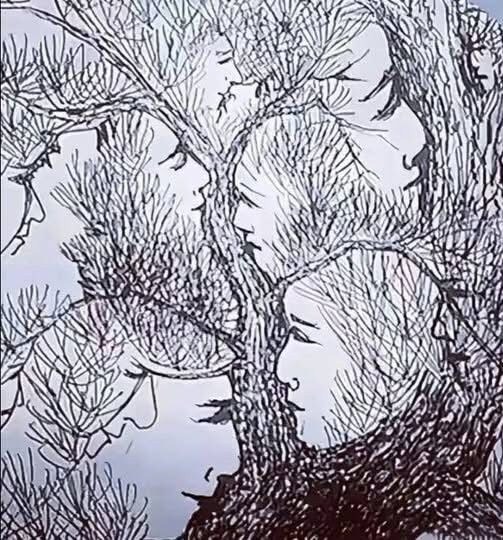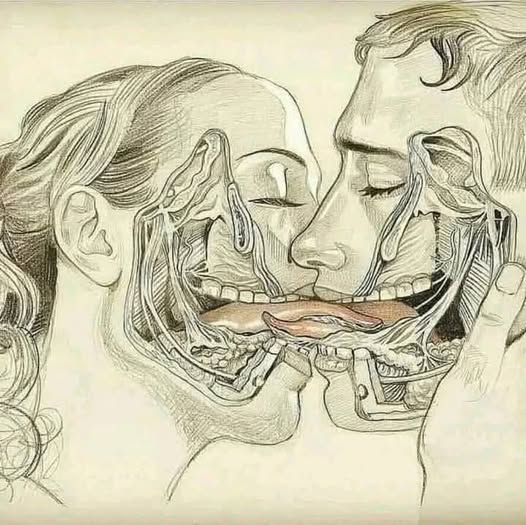Just 0.1% of people are able to spot all the faces in under 30 seconds
The psychological phenomenon of seeing familiar patterns, like human faces, in random textures such as tree bark is called pareidolia. It is a natural response where our brains impose meaning on ambiguous stimuli.
A fascinating example of this is an artistic tree illusion that masterfully conceals human profiles within its design. The artwork intentionally uses the natural forms of branches and leaves to engage our perception.
This technique is effective because our brains are evolutionarily wired to quickly recognize faces. This ability was crucial for early humans to identify allies and dangers, and artists cleverly exploit this instinct.
By using textures, shadows, and negative space, the artist subtly suggests facial features. Elements like eyes, noses, and lips are formed from the intricate details of the tree.
Within this specific illusion, viewers are encouraged to find several hidden figures. With careful observation, one can discover lovers, elders, and children integrated into the trunk and branches.
These faces do not reveal themselves instantly. They emerge gradually, providing a slow and rewarding experience for those who patiently study the artwork.
Ultimately, this illusion showcases the artist’s creativity and the power of human perception. It transforms a simple tree into a mysterious gallery of hidden characters, reminding us to look more deeply at the world around us.






